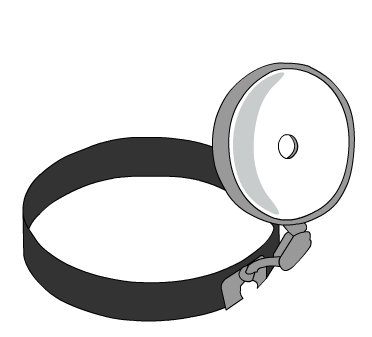1. Name of the location of 90% of epistaxis
2. A genetic disorder that forms AV malformations in the skin, lungs, brain etc
3. Name of posterior vascular plexus in the nasal cavity causing posterior epistaxis
4. 1st line treatment for all epistaxis
5. The common brand name for anterior nasal packing
6. Chemical used in cautery sticks
7. Physically scaring complication of posterior nasal packing with foleys catheter
Coming soon..
Dysphagia
Dysphagia
This page describes the physiology of swallowing and then disease that can cause problems with swallowing - dysphagia.
Normal swallowing
Swallowing is a complex but orderly sequence of events that enables a suitably prepared bolus to be delivered to the stomach. It involves muscles in the mouth, pharynx and oesophagus.
The swallowing centers are in the reticular formation of the medulla. Afferent information is carried by the trigeminal nerve, the glossopharyngeal and the vagus. Efferent information is via the glossopharyngeal, vagus and hypoglossal nerves.
Swallowing is described as being in three stages:
-
Oral
-
Pharyngeal
-
Oesophageal
Oral
The oral stage is under voluntary control. The mouth is closed and respiration ceases. The tongue elevates and pushes the prepared bolus upwards against the hard palate and then backwards into the oropharynx.
Pharyngeal
Once past the oropharyngeal isthmus (the pillars of the tonsil) swallowing enters the pharyngeal phase. This is a reflex phase and it's aim is to get the bolus from the mouth, past the larynx and into the upper oesophagus.
First the nasopharynx is closed off by elevation of the soft palate. This stops food regurgitating into the nose. The pillars close to prevent food re-entering the mouth. The larynx is pulled up under the tongue and this action flops the epiglottis closed. Food is thus diverted into the lower pharynx and can't enter the nose, mouth or larynx. The constrictor muscles push the food through the relaxed cricopharyngeus. This muscle closes behind the bolus as it enters the oesophagus.
Oesophageal
This is also a reflex phase and the food is carried down the oesophagus by peristalsis.
Causes of dysphagia
The important diseases, from a foundation Doctor perspective, that cause dysphagia are listed here.
Inflammatory diseases
Acute dysphagia is usually caused by an inflammatory condition such as tonsillitis (with or without quinsy) but can also be due to a foreign body, chemical burn or aphthous ulcers.
Neoplasia
Tumours of the oropharynx, larynx and hypopharynx can all cause difficulty with swallowing once they have reached a certain size. Dysphagia is one of the red flag symptoms in head and neck malignancy.
Pharyngeal pouch
This is a herniation of pharyngeal mucosa through a weakness in the inferior constrictor muscle. It is slowly progressive and causes dysphagia, weight loss, halitosis, gurgling in the neck, aspiration and cough.


Case courtesy of Dr Bruno Di Muzio, <a href="https://radiopaedia.org/">Radiopaedia.org</a>. From the case <a href="https://radiopaedia.org/cases/31731">rID: 31731</a>
Lateral and A-P projections during a barium swallow. Barium swallow shows a pharyngeal pouch very well. The images show barium pooling in the diverticulum very clearly.
Oesophageal stricture
Strictures in the oesophagus will cause dysphagia. They many be idiopathic, due to chronic acid reflux (strictures usually in the lower third) or be malignant in nature. Treatment depends on the underlying cause.
Globus pharyngeus
Patients describe this condition in a number of ways. For example: "a feeling of something stuck in the throat", "a lump in the throat", and "a feeling of pressure in the throat". Classically, the symptom is worse between meals and eased by eating and drinking. Typically, the patient is middle-aged and female but this is not universal.
Investigation is performed when there is doubt about the diagnosis and a flexible oesophagoscopy or barium swallow are performed.
Neuromuscular disease
Being a highly coordinated muscular activity it is not surprising that neuromuscular disease may cause dysphagia. Motor neurone disease, stroke, multiple sclerosis and myasthenia gravis can all cause difficulty with swallowing.
In these situations the airway is often under threat from food and fluid in the pharynx. Remember that the innervation of the larynx and pharynx may be affected by the same diseases and the primary function of the larynx (protection of the airway) may be lost.
Suspect a neurological cause in 'high dysphagia' especially if there is also coughing during eating, and if food or fluid enter the back of the nose during swallowing. These suggest a problem with neuromuscular function.
A videofluroscopic swallow is very useful in determining the nature of the problem.

The chest X-ray shows aspiration of barium into both lung fields. This is an extreme case and it is more usual to see barium entering the larynx (laryngeal penetration) or passing into the trachea (aspiration).
Case courtesy of Nicola Zelow, <a href="https://radiopaedia.org/">Radiopaedia.org</a>.
From the case <a href="https://radiopaedia.org/cases/55903">rID: 55903</a>
A patient comes to see you with dysphagia...
Difficulty with swallowing is one of the more challenging symptoms in primary care because it is very difficult to examine anything except the oral cavity and oropharynx. A good history is, therefore, very important. The patient will usually be able to tell you whether the problem is 'above the clavicle' or below it (i.e. is it high dysphagia or low dysphagia). This will help you determine whether the problem is primarily:
Oral and Pharyngeal (cancer, diverticulum, globus pharyngeus, obstructive tonsils)
Oesophageal (cancer, stricture, achalasia, dysmotility from acid reflux disease)
Neuromuscular (e.g. strokes, head injury, dementia, bulbar palsy, myasthenia)
Red flag symptoms and signs are particularly important here. If there is any concern that the patient may have a cancer they should be referred without delay.
If the patient has high dysphagia, once history and examination are complete, a video swallow is a very useful investigation.
If the patient has low dysphagia flexible endoscopy of the oesophagus is more valuable.
Note that barium swallows do not show the hypopharynx very well and cannot be relied upon to exclude malignancy in the area.

